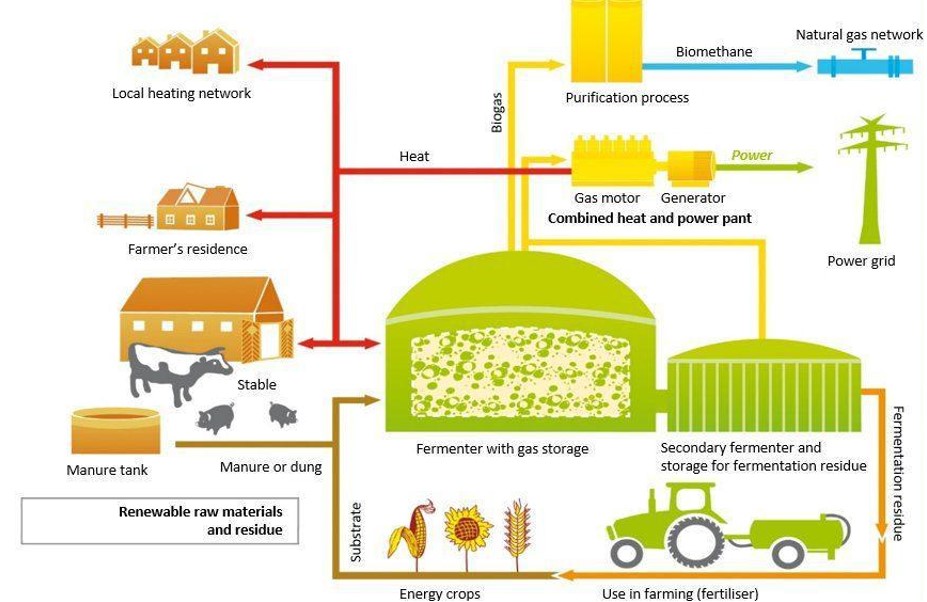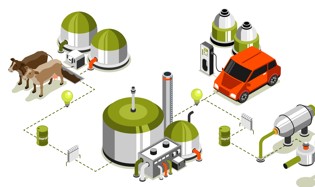- Definition and Types of Energy
- Myths And Misconceptions About Energy
- The Relationship Between Energy and Environment
- Climate Change and Carbon Footprint
- Greenhouse Gas Effect
- The Role of Human-Induced Greenhouse Gases and Energy Consumption
- Energy Efficiency and Sustainability
- Renewable Energy Sources and Future Perspectives
- Play and Learn
- Solar Energy Conversions
- Solar Energy Worldwide
- Solar Energy in Partner Countries
- Positive and Negative Impacts
- Technologies for Harnessing Solar Energy
- Solar thermal energy technologies and applications
- Electricity Generation Methods
- Passive Heating and Cooling of Residences with the Sun
- Concentrator solar power (CSP) systems and electricity generation
- Systems and Applications That Generate Electricity directly from solar rays
- Photovoltaic Cells and Panels
- Domestic PV Systems
- Off-Grid PV Systems
- Hybrid Connected Systems
- Materials Used in PV Cells
- Play and Learn
Biogas Technology
Biogas is a type of gaseous biofuel that is widely used all over the world. Its main advantage is that all kinds of organic waste can be converted into energy. Wastes that may be harmful to human health and the environment are converted into biogas by fermentation in an oxygen-free environment.

Uses of Biogas

Heat generation (e.g. in stoves and heating systems)
Electricity generation (in motors or cogeneration systems)
Use as fuel (integrated into biogas engines or natural gas systems)
In addition, the sludge generated during biogas production can be used as fertilizer in agricultural production.
Biogas Plants

Small-scale plants are common in Asia, and the production of fermented fertilizers from animal and vegetable waste is often at the forefront.
Medium and large-scale facilities are preferred in Europe and it is aimed to both dispose of domestic, industrial and agricultural wastes and convert them into energy.